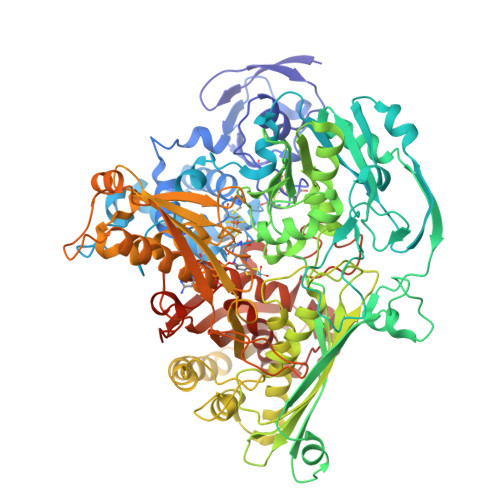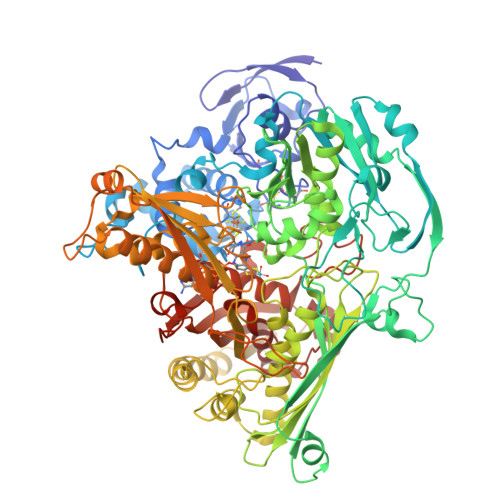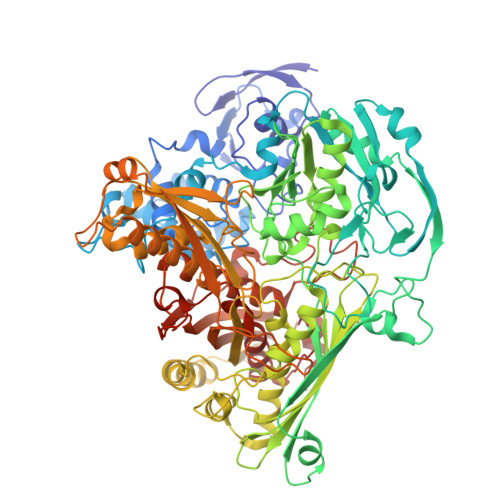Gene sequence and crystal structure of the aldehyde oxidoreductase from Desulfovibrio desulfuricans ATCC 27774.
Rebelo, J., Macieira, S., Dias, J.M., Huber, R., Ascenso, C.S., Rusnak, F., Moura, J.J., Moura, I., Romao, M.J.(2000) J Mol Biology 297: 135-146
- PubMed: 10704312
- DOI: https://doi.org/10.1006/jmbi.2000.3552
- Primary Citation of Related Structures:
1DGJ - PubMed Abstract:
The aldehyde oxidoreductase (MOD) isolated from the sulfate reducer Desulfovibrio desulfuricans (ATCC 27774) is a member of the xanthine oxidase family of molybdenum-containing enzymes. It has substrate specificity similar to that of the homologous enzyme from Desulfovibrio gigas (MOP) and the primary sequences from both enzymes show 68 % identity. The enzyme was crystallized in space group P6(1)22, with unit cell dimensions of a=b=156.4 A and c=177.1 A, and diffraction data were obtained to beyond 2.8 A. The crystal structure was solved by Patterson search techniques using the coordinates of the D. gigas enzyme. The overall fold of the D. desulfuricans enzyme is very similar to MOP and the few differences are mapped to exposed regions of the molecule. This is reflected in the electrostatic potential surfaces of both homologous enzymes, one exception being the surface potential in a region identifiable as the putative docking site of the physiological electron acceptor. Other essential features of the MOP structure, such as residues of the active-site cavity, are basically conserved in MOD. Two mutations are located in the pocket bearing a chain of catalytically relevant water molecules. As deduced from this work, both these enzymes are very closely related in terms of their sequences as well as 3D structures. The comparison allowed confirmation and establishment of features that are essential for their function; namely, conserved residues in the active-site, catalytically relevant water molecules and recognition of the physiological electron acceptor docking site.
Organizational Affiliation:
Departamento de Química Centro de Química Fina e Biotecnologia, Faculdade de Ciências e Tecnologia, Universidade Nova de Lisboa, Caparica, Portugal.



















